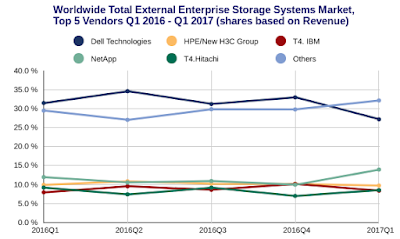
Emerging technologies, such as IoT, robotics, and augmented reality or virtual reality (AR/VR), will drive the next wave of growth in the information and communications technology (ICT) industry, increasing the overall opportunity to $5.5 trillion by 2020, according to the latest market study by International Data Corporation (IDC).
The IDC forecast illustrates that the ICT sector is dependent upon new technology innovation for growth, as traditional business technology revenue streams begin to decline in the face of cannibalization, substitution, and the shift to cloud-based computing solutions.
Global ICT market development
New technologies, which IDC calls “Innovation Accelerators,” will provide almost $7.4 trillion in aggregate industry revenue from 2015-2020 — adding $1.8 trillion to the overall size of the industry in terms of annual sales by the end of the forecast period.
A large proportion of this growth will come from the fast-growing IoT market, which is forecast to reach almost $1.3 trillion in annual revenue by 2020, of which more than $1 trillion represents new opportunity outside of traditional technology market categories.
According to the IDC assessment, robotics, augmented reality or virtual reality, security, cognitive systems or artificial intelligence, and 3D printing will contribute the rest of this fast-growing portion of the ICT market.
“The traditional ICT market of data center infrastructure, client devices, software, services, and telecommunications is now growing at a rate not much faster than real GDP and increasingly resembles a mature sector of the overall economy,” said Stephen Minton, vice president at IDC.
That being said, between 2015 and 2020, overall ICT Spending – excluding the Innovation Accelerators – will see a compound annual growth rate (CAGR) of just 1 percent in constant currency terms. Including the Innovation Accelerators, ICT spending will increase by 5 percent over the same period. In total, the Innovation Accelerators will post a CAGR of 18 percent.
Asia-Pacific (excluding Japan) represents the largest market for Innovation Accelerators, forecast to reach more than $600 billion by 2020, followed closely by the United States. The fastest growth over the same period will be in Latin America, Central & Eastern Europe, and the Middle East and Africa.
“Device sales are now dominated by mobile devices and cloud service providers represent a growing proportion of all infrastructure hardware and software sales, while big data and analytics are at the heart of the fastest-growing opportunities. Meanwhile, growth in the telecom market is already entirely dependent on mobile,” added Minton.
Global outlook for public cloud services
With public cloud services still growing at a double-digit rate, cloud computing will continue to cannibalise traditional spending on infrastructure, software, and IT services. Big data and analytics is also still expanding at a double-digit rate of growth and is forecast to see a 12 percent CAGR between 2015 and 2020.
Public cloud services and big data and analytics will each provide more than $200 billion in annual revenue by 2020. Meanwhile, the explosion in smartphone sales over the past few years and the ongoing growth of mobile data services means that overall mobility offerings are already valued at more than $1.5 trillion in annual sales.
Read more: Global cloud IT infrastructure revenues hit $8 billion in Q117, says IDC







